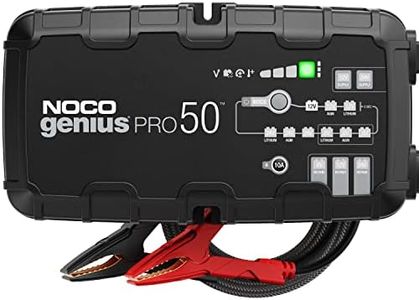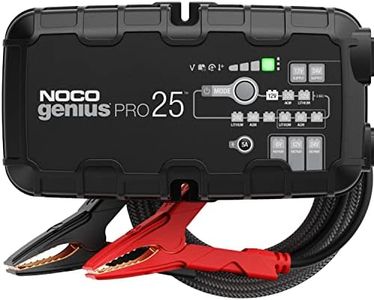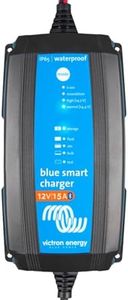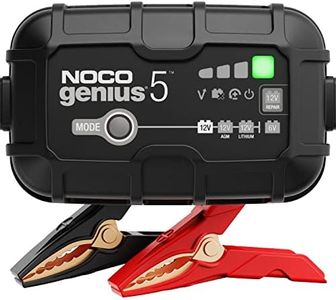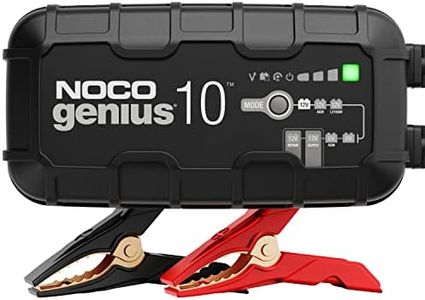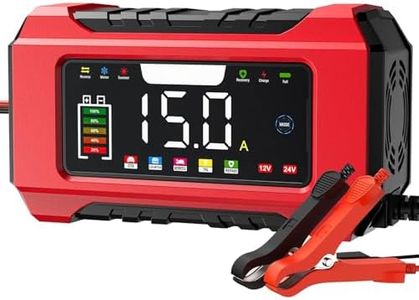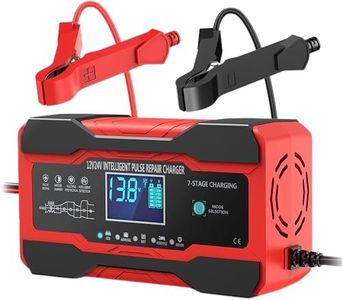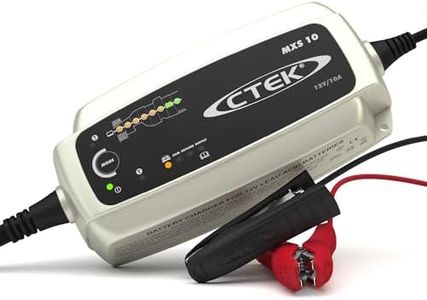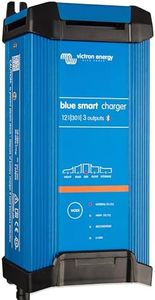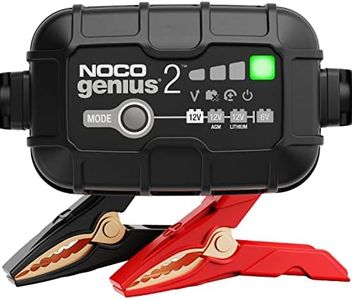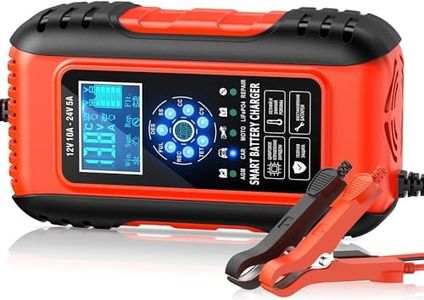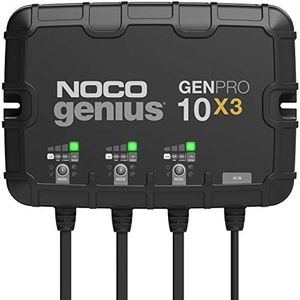We Use CookiesWe use cookies to enhance the security, performance,
functionality and for analytical and promotional activities. By continuing to browse this site you
are agreeing to our privacy policy
10 Best Marine Deep Cycle Battery Chargers
From leading brands and best sellers available on the web.Buying Guide for the Best Marine Deep Cycle Battery Chargers
Choosing the right marine deep cycle battery charger is crucial for maintaining the health and longevity of your boat’s batteries. A good charger ensures your batteries are properly charged, protected from overcharging, and kept at the best performance level. When selecting a charger, it’s important to consider the specific requirements of your boat, how often you use it, and the type of batteries you have. Carefully reviewing the main specifications will help you make an informed choice tailored to your marine needs.Charging Capacity (Amp Rating)The charging capacity, measured in amps, determines how quickly a charger can replenish your battery. Higher amp ratings charge batteries faster, but not every battery can handle high currents. If you have larger or multiple batteries, a higher amp charger may be suitable. For smaller batteries or to promote long-term health, a lower amp charger might be preferred. Match the charger's output to both your battery's capacity and your usage patterns – frequent boaters or those with large battery banks often benefit from higher capacities, while occasional users or smaller boats can use lower amp models for safer charging.
Number of Charging BanksCharging banks refer to the number of batteries a charger can manage simultaneously. Single-bank chargers are ideal for boats with one battery, while multi-bank chargers are necessary if your boat has separate batteries for different systems (like starting and electronics). Choose the number of banks based on the number of batteries you routinely need to charge at once. Using a charger with the right number of banks prevents constant reconnection and ensures balanced charging across your system.
Voltage CompatibilityMarine batteries are most commonly 12V, but some boats use 24V or even 36V systems. It’s essential to choose a charger that matches your battery system's voltage. If your boat uses a 24V setup, a 12V charger won’t work effectively. Check your boat’s electrical system and select a charger that can provide the correct output for trouble-free operation and to avoid damaging your equipment.
Battery Chemistry SupportBatteries come in different types, such as flooded lead-acid, AGM (absorbent glass mat), or lithium-ion. Not every charger is compatible with every chemistry. Using the wrong charger can lead to undercharging or even damage. Refer to your battery manufacturer's recommendations and ensure the charger can safely handle your battery type – especially important if you use newer lithium batteries. Flexibility in chemistry support can be helpful if you plan upgrades in the future.
Smart Charging/Automatic Shut-OffSmart chargers can automatically sense battery status and adjust their charging cycle, often providing multi-stage charging for optimal battery health. They typically include features like automatic shut-off or trickle/maintenance modes to prevent overcharging. This is especially important for deep cycle batteries, which can be harmed by continual overcharging. If you want to set and forget, or leave your boat unattended with the charger on, a smart charger with these features is a wise choice.
Waterproof/Durability RatingMarine environments are harsh, with exposure to water, humidity, and salt. Chargers must be durable and often waterproof or at least water-resistant. Look for models rated for marine use, indicating they can withstand splashes, condensation, or even temporary immersion. If your charger will be installed in a damp area or exposed to the elements, prioritize a higher waterproof rating to ensure long-term reliability.
Size and Mounting OptionsCharger size and mounting choices affect where and how you can install it on your boat. Some chargers are compact for tight spaces; others are larger but offer more power. Consider where you’ll place the charger, and make sure it fits the available space without overheating or blocking ventilation. Integrated mounting brackets or hardware can make installation easier, so assess your boat’s layout and choose accordingly.
